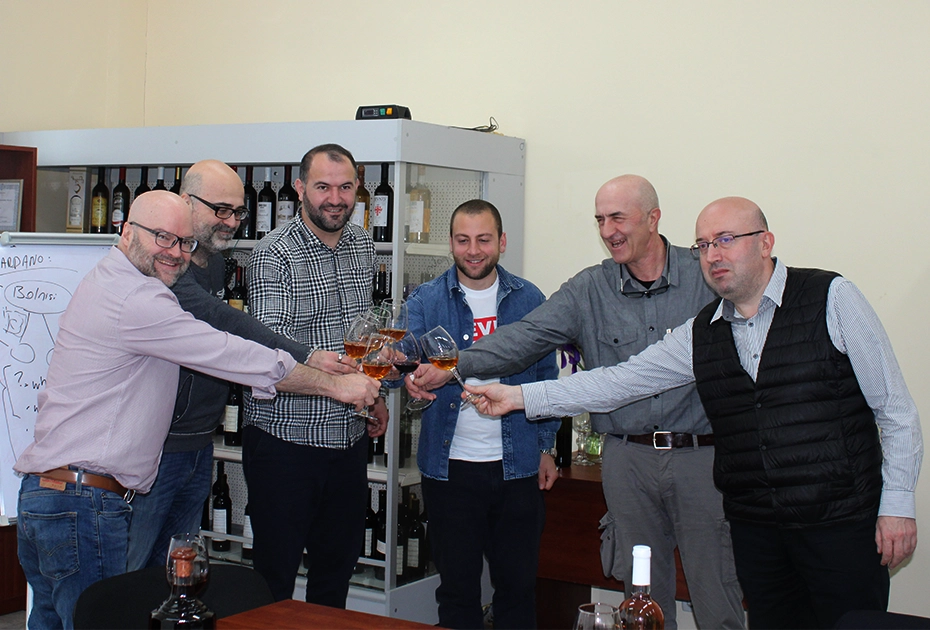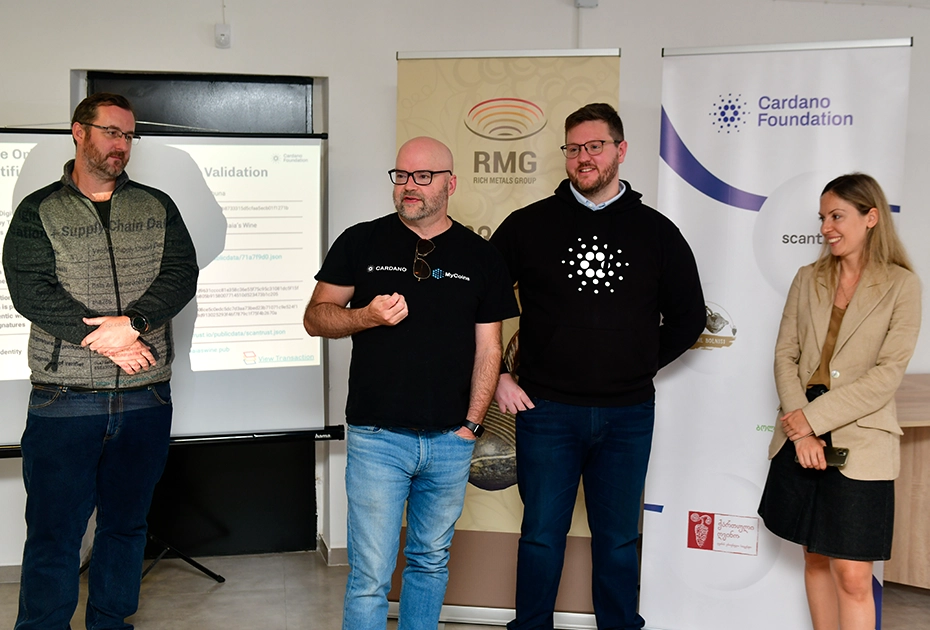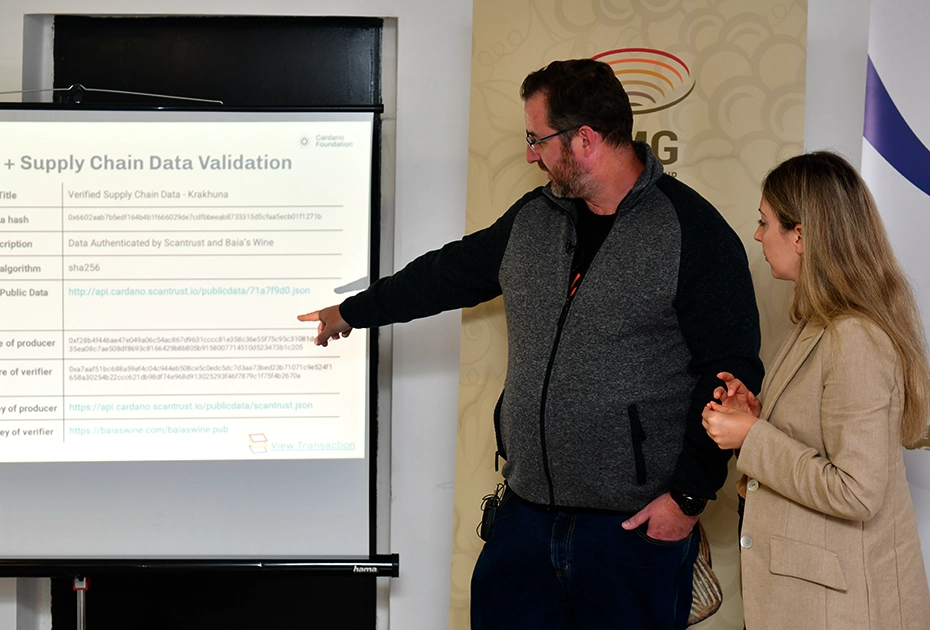In 2022, the Cardano Foundation signed a Memorandum of Understanding with the National Wine Agency to create a traceability solution for Georgian Wineries. Early birds of the pilot were chosen from the homeland of wine: Georgia’s 8000-year-old winemaking location and Protected Designation of Origin — Bolnisi. Bolnisi PDO (Protected Designation of Origin) was officially registered In 2019. The PDO recognizes six grape varieties and three winemaking techniques; “Bolnisi PDO Wine” can be white, amber, red, or rose dry wine. Today, 25 Wineries selling their products to local and international markets are using Cardano traceability solutions for their 2022 and newer vintages, adding up to 100,000 stickers of anti-counterfeit QR-codes annually applied on their product bottles.
The solution is simple: Cardano Foundation collaborated with Scantrust to create blockchain-based anti-counterfeit unique QR codes, which include information about the winemaker and, in parallel, are connected with Georgian National Wine Agency to attach state-issued certificates to each winery.
The idea was born in 2020 as part of the Cardano Foundation’s efforts towards increased blockchain enterprise adoption, aiming to bring digital change to the world outside of the blockchain sphere. The Country of Georgia, with its millenary wine-making history, saw the opportunity for a perfect match, standing at the forefront of innovation and blockchain adoption.
By signing the Memorandum of Understanding, the National Wine Agency of Georgia plans to partner long-term with the Cardano Foundation to digitize Georgian wines from all protected designations of origin (PDOs). For more transparency, all the certification procedures will be stored on the Cardano blockchain. Today, the Georgian Wine Traceability System, an official Georgian National Wine Agency program, is used not only by wineries from Bolnisi PDO but also by select wineries in the Kakheti region. Together with Scantrust, this technology is revolutionizing the way that wine is sold globally by allowing the customer to have more direct interaction with the winemaker and to have the traceability of the winery itself.
Bolnisi Microzone is distinguished by its naturally rich and organic soil brought about by its geographical location, climate with moderately cold winter and hot summer, atmospheric sediments, and soil diversity. The vine varieties of Rkatsiteli, Chinuri, Goruli Mtsvane, Saperavi, Tavkveri, Shavkapito, and Asuretuli Shala thrive in the Bolnisi microzone and lend to local traditions of viticulture.“Bolnisi PDO Wine” can be white, amber, red, or rose dry wine.
Since the fall of the Soviet Union, Bolnisi has been reviving its wine industry, primarily by embracing its unique German history and combining it with Georgian winemaking techniques. Georgian winemakers have been planting new vineyards, experimenting with different winemaking styles, and reviving local varieties. Today, winemakers produce over ten different styles of wine from five local grape varieties, with more to come in the future years. Winemakers are experimenting with sparkling wines, semi-sweet variants of their typically dry wines, and spirits such as brandy. The Bolnisi region is now a competitive producer of high-quality wines in markets worldwide.
The symbol of the Wine Bolnisi Association is called “Doki,” or duck. The symbol was inspired by a duck-shaped jug/decanter found during archaeological excavations in Bolnisi. Unique in its form, it dates back 2600 years and, according to historians, was a vessel for pouring wine.





